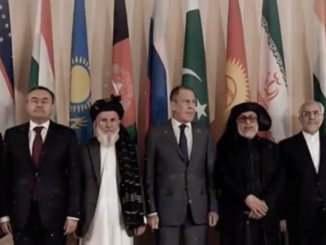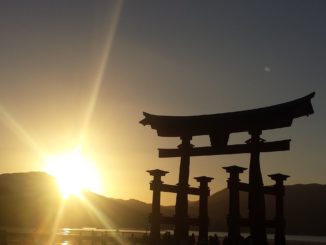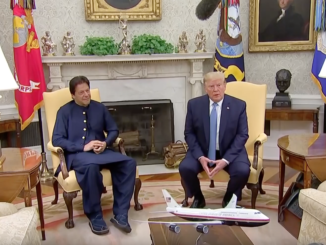
Strategic culture in the 21st century has moved from its outdated standpoint of the 20th century and is more focused on other facets of security that include ecology, economics, environment, population, energy, and the rights of the unborn. China focuses predominantly on these features, which has been additionally augmented by the oceanic security policy, and the BRI, formerly known as One Belt One Road (OBOR).
The BRI was announced by the Chinese President, Xi Jinping, during his visit1 to Kazakhstan in September 2013. It is expected that the BRI will build a chain of seaports linking China with South Asia, South East Asia, the Middle East, Africa and Europe. It will also establish direct rail and road corridors between East Asia and Europe. It also brings into line China’s strategy, i.e. String of Pearls. The term ‘strategic culture’ was first used in China’s policies in 1988. Many historians have emphasized that the Chinese strategic culture has taken influence from the Confucius school of thought which focuses on peace and defence. Contemporary Chinese strategists have also asserted that the country’s strategic culture has always emphasized the defensive military stance, therefore, it stands in contrast with the aggressive strategic cultures of many other countries.
Furthermore, it is important to note that, since 1940, China considers every military venture as a self-defence measure, including the Korean War (1950–1953), the Sino-Indian war (1962), the clashes with the land attack against Vietnam (1979) and Soviet Union (1969). So, historically, China has affirmed that their strategic culture revolves around defence and protecting its borders. The String of Pearls strategy is focused on increasing China’s economic, military, diplomatic and political clout in the Indian Ocean Region (IOR). Every pearl in this chain or string refers to a sphere of power, which China is trying to secure along the IOR. The pearls are a symbol for Chinese ports in Sri Lanka, Pakistan Bangladesh, Maldives, and Myanmar.
China is constructing infrastructure at the Gwadar port in Pakistan, which is located only 240 miles away from the Straits of Hormuz. In Sri Lanka, the Hambantota port is of great significance as it is approximately 6 nautical miles away from the Indian Ocean’s major east-west shipping route. China is also interested in the advancement of the Chittagong port, and to link it to the Yunan province in China through Myanmar. Myanmar has a great strategic location as an ocean outlet, which would facilitate the flow of resources (oil in particular) to China, without passing through the vulnerable waters of the Malacca Strait.
China wants to achieve maritime superiority to challenge the US and its position as a global superpower. The foremost objective of this strategy is the strategic settlement of these pearls with one another in order to make a chain of hubs that can work as both economic as well as military and intelligence cores in the Indian Ocean Region. The naval officer historian and strategist, Alfred Thayer Mahan, foretold that the future of the 21st century would be determined on the waters of the Indian Ocean in these verses: “whoever controls the Indian Ocean, dominates Asia.” This ocean is the key to the seven seas in the 21st century, the destiny of the world will be decided in these waters.
The Indian Ocean covers at least one-fifth of the world’s total ocean area and is linked with Africa and the Arabian Peninsula, known as the western Indian Ocean; India’s coastal waters, i.e. the central Indian Ocean; and the Bay of Bengal, which is near Myanmar and Indonesia, i.e. the eastern Indian Ocean. The most important trade routes of the world pass through this region. These routes link the Middle East, Africa, and South Asia with the broader Asian continent to the east and Europe to the west. More than 50 per cent of the world’s maritime oil trade is carried out in the IOR, which itself is believed to be rich with energy reserves. The Indian Ocean Region is the hub of the most important strategic chokepoints in the global maritime trade, making maritime security and access to water vital to a state’s power and progress. The Straits of Malacca and Hormuz are also amongst such chokepoints over which 32.2 million barrels of crude oil and petroleum are transported each day.
The race of the 21st century has been for economic struggle and dominance over the trade courses, especially with respect to maritime security in the Indian Ocean Region, as it is strategically very significant and presently dominated by the US and its allies. China, on the other side, has been looking to advance its position in the Indian Ocean Region by executing String of Pearls under the BRI.
To conclude, it is evident that the Chinese strategy of the 21st century is clearly defensive, mainly based on the String of Pearls coupled with the Belt and Road Initiative, and on developing strong economic relations with the littoral countries of the Indian Ocean that could possibly provide political influence in the future. It is crystal clear that Chinese logistics or naval base facilities in the Indian Ocean could enable a greater role for China in the region and possibly challenge the existence of the US in the region.
The strategic culture of China in the 21st century is inclined towards trade, economic growth and maritime security, which would help China to pawn the US impact in the Pacific Ocean. China’s foreign policy has turned out to be globally determined, and the BRI forms a cornerstone. It expands across sixty countries along intended routes extending through the Middle East, Asia, Europe and even Africa, and could possibly generate an even greater international influence. The alteration of China’s external policy began late in the period of the former President Hu Jintao. As its economic and financial power significantly enhanced, China began to involve in multilateral regional collaborations. Hence, China’s current practical foreign policy under President Xi Jinping, is an image of stability and everlasting development rather than of revolutionist modification.
China has now turned a new page in its foreign policy decision-making and is firm in its stance to redesign the world order rather than be moulded by the changing world. Compared with his predecessors, President Xi has discarded China’s long-held policy of keeping a low profile in the international arena. China’s foreign policy is now more centralized, proactive and even more aggressive than ever.
![]()




The article is a string. Every word is a pearl.
It is good to unleash a pearl of wisdom about a niche of strategic culture. In Asia, the latter is getting being popularized using it as a tool to pursue one’s own policies and relationships with neighbors. As for Pakistan, it lacks wisdom in its policies to be used as a strategic culture. Nevertheless, it is need of the hour that the policy of strategic culture is to be implemented and is a sine qua non for successful foreign policy.